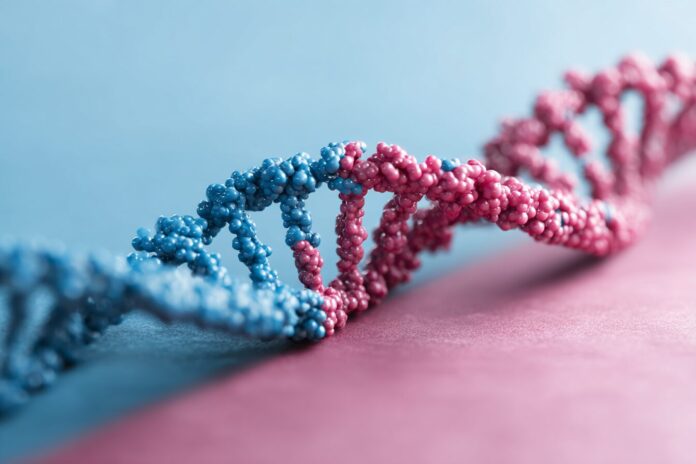Introduction: Rethinking the Old 50-50 Assumption
For generations, expecting parents embraced the notion that every new baby has an equal 50-50 chance of being a boy or a girl. Because the traditional explanation relies on the combination of an X-only egg and a sperm carrying either an X or a Y chromosome, this idea of randomness was widely accepted. However, emerging research is now challenging this simplistic view.
Most importantly, modern studies indicate that the story is more complex than once thought. New scientific insights suggest that genetic factors, maternal age, and even subtle changes in the body’s environment may all influence the eventual outcome. Therefore, what was once considered pure chance now appears to be affected by biological nuances, a shift that is reshaping our understanding of sex determination.
Exploring the Science: Beyond a Simple Coin Toss
The age-old belief in a simple coin toss scenario for sex determination is now under scrutiny. Because sperm carries either an X or a Y chromosome at random, the traditional 50-50 statistical expectation seemed logical. However, recent research from sources like Economic Times and Hindustan Times reveals that sex determination can be influenced by factors that stretch beyond simple chance.
Because these studies are increasingly detailed, the scientific community is taking a closer look at other contributing elements. For instance, subtle intrinsic factors within the maternal environment may sway the chances. In addition, recent studies have suggested that certain genetic markers may predispose families to favor one sex over the other. This nuanced view is essential to understanding why biology sometimes deviates from the expected 50-50 pattern.
The Role of Maternal Age and Physiological Changes
Maternal age plays a crucial role in sex determination. As women grow older, their physiological environment undergoes changes such as alterations in vaginal pH and cervical mucus composition. These changes might favor the survival of either X-carrying or Y-carrying sperm. Therefore, women who conceive later in life might have a higher probability of consistently having babies of one sex.
Because research increasingly shows a correlation between maternal age and the sex outcome of a baby, many parents are now reevaluating what they once believed was entirely random. Besides that, these findings provide reassurance to families noticing repeated patterns in the sex of their children. As detailed on platforms like the Berkeley Parents Network, understanding these biological nuances becomes essential for future family planning decisions.
Genetics: The Hidden Script in Sex Determination
Genetics has long been viewed as the blueprint of life, and recent data now support the idea that two mysterious genetic loci might influence whether children tend to be of one sex in a family. Because these genetic markers do not follow traditional reproductive pathways, they offer an intriguing glimpse into how inherited traits could subtly tip the scales in favor of boys or girls.
Most importantly, these genetic factors raise the prospect that certain families could be predisposed to a specific sex based on inherited DNA. As explained in articles on Veritas International, these preliminary discoveries could lead to more personalized understandings of family genetics and eventually contribute to advances in reproductive science.
Environmental and Evolutionary Influences on Sex Determination
Besides genetics, environmental factors also play a significant role. For example, subtle changes in diet, lifestyle, and even seasonal variations have been discussed by various researchers. Because human reproduction is complex, it is critical to acknowledge the interplay of multiple influences that could affect which sperm reaches the egg first.
Therefore, evolutionary biology suggests that these trends may have developed as adaptive responses over time. Most importantly, the integration of environmental and genetic components encourages a holistic view of how sex determination is orchestrated. Besides that, adopting this broader perspective can help families understand that the process of conceiving a child is a fusion of nature’s design and environmental conditions.
Implications for Expecting Families and Future Research
If you have experienced repeated occurrences of children of the same sex in your family, there is emerging scientific evidence that might explain this phenomenon. Because current research only highlights possible influences, expecting parents can take comfort in knowing that these patterns are more commonplace than previously recognized. Given that maternal age and genetic predispositions are significant factors, families might better understand their reproductive journey.
Most importantly, scientists continue to investigate these trends with the goal of providing clearer answers. Therefore, while the exact mechanisms remain under research, families are encouraged to stay informed as new findings emerge. As detailed in recent publications, such as those from Science News, the landscape of sex determination is rapidly evolving, offering a promising future for personalized reproductive science.
Conclusion: A New Perspective on the Odds
The once widely held belief that a child’s biological sex is determined by an even 50-50 chance is gradually being re-evaluated in light of new scientific evidence. Because factors such as maternal age, genetics, and environmental cues are now known to affect the outcome, our understanding of reproduction is becoming more refined.
In summary, while the randomness of conception still plays a role, the precise blend of biological factors adds a layer of complexity that modern research continues to decipher. Therefore, as emerging studies shed light on these influences, expecting families may find themselves better equipped to appreciate the interplay between chance and biology. Besides that, the future of reproductive science looks toward deeper insights that could one day tailor family planning with even greater precision.
References
- Economic Times: New research challenges the 50-50 myth
- Hindustan Times: Shocking new study reveals what decides if it is a boy or girl
- Berkeley Parents Network: Advice on Conception & Gender
- Veritas International: The Probability of Having a Boy or a Girl
- Science News: Toddler behavior and question framing



